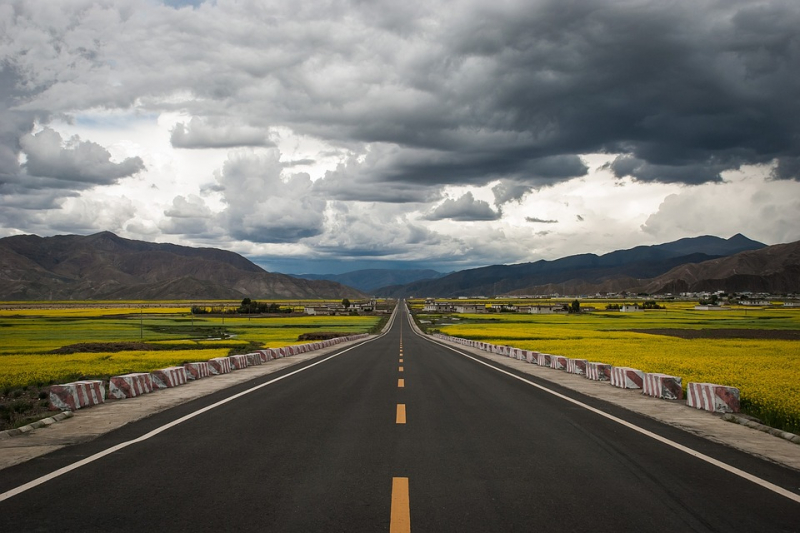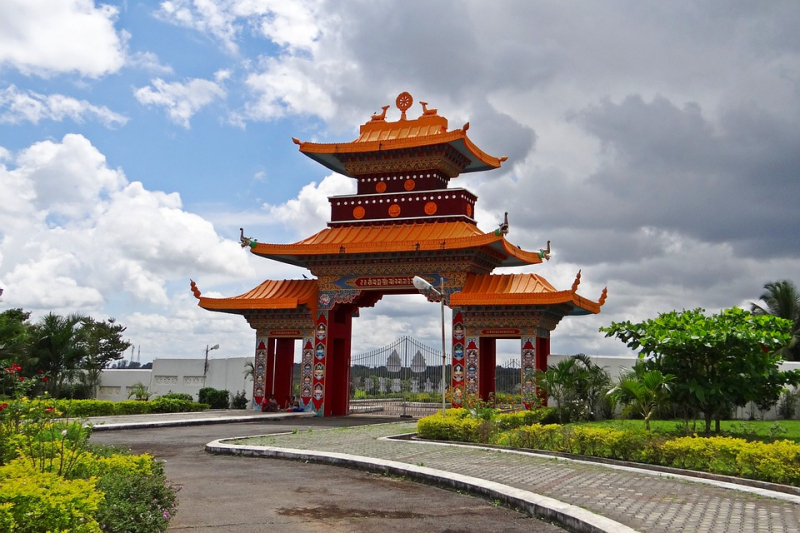Top 5 Reasons Why Planes Don't Fly Over Tibet
Planes don't fly over Tibet for a variety of reasons. These factors create significant safety and logistical challenges for airlines, and many choose to avoid ... read more...flying over the region altogether or limit their flights to certain times of the year. In this article, Toplist will find out reasons why planes don't fly over Tibet.
-
The average elevation of Tibet is over 4,500 meters (14,800 feet), which means that the air density is much lower than at lower altitudes. At high altitudes, the air is thinner, which makes it more difficult for planes to fly, particularly in terms of maintaining their altitude and speed.
The reason for this difficulty lies in the way that planes generate lift. Planes generate lift through the use of their wings, which are designed to create an area of low pressure above the wing and high pressure below it. This pressure differential generates the lift that keeps the plane in the air. However, this process is dependent on the density of the air. At higher altitudes, the air is less dense, and there is less air available to generate lift. This means that planes need to fly faster to generate the same amount of lift, which can be challenging for the engines and the navigation systems of the plane.
Additionally, the low air density at high altitudes means that the air is less able to dissipate heat, which can cause issues with the engine cooling systems. In extreme cases, the engines may even fail, which could be catastrophic for the plane and its passengers.

Photo by egmuri on Pixabay 
Photo by nrxfly on Pixabay -
Tibet is located in a region where the weather conditions can be extremely severe, with strong winds and turbulence, and weather changes that can occur very quickly. Turbulence, in particular, can be a significant challenge for planes flying over Tibet. Turbulence is caused by the movement of air in the atmosphere, which can be affected by a variety of factors, including wind, temperature, and pressure. In areas of high altitude, turbulence can be even more severe, as the thin air is more easily disrupted by wind and other atmospheric conditions. Strong turbulence can be very dangerous for planes, as it can cause the plane to lose altitude or even experience structural damage.
In addition to turbulence, the high altitude and cold temperatures in Tibet can also cause problems for planes. At high altitudes, the air temperature can be very low, which can affect the performance of the plane's engines and the accuracy of its navigation systems. The low temperatures can also cause icing on the plane's surfaces, which can affect its ability to fly and create additional safety risks.

Photo by Tama66 on Pixabay 
Photo by Eknbg on Pixabay -
The limited infrastructure in Tibet is another reason why planes don't fly over the region. Tibet is a remote and sparsely populated region, with limited resources for air traffic control and emergency services. This means that in the event of an emergency, it may be difficult for planes to get the assistance they need, which could be potentially life-threatening.
For example, if a plane experiences a mechanical failure or a medical emergency, it may be difficult for the pilots to communicate with air traffic control or emergency services. In addition, the limited infrastructure in Tibet means that there are few airports or landing strips in the region, which can make it difficult for planes to make emergency landings.
Another challenge with the limited infrastructure in Tibet is that it can be difficult to access the region in the first place. Tibet is a politically sensitive area, and there are restrictions on who can enter the region and where they can travel. This means that it can be difficult for air traffic controllers and emergency services to access the region and provide assistance in the event of an emergency.

Photo by hbieser on Pixabay 
Photo by sarangib on Pixabay -
The Chinese government has placed restrictions on flights over certain areas of Tibet, citing national security concerns. Tibet is a politically sensitive region, and the Chinese government has sought to maintain control over the region and limit foreign influence. As part of this effort, the Chinese government has placed restrictions on who can travel to and within Tibet, as well as on which areas planes can fly over.
In some cases, the Chinese government has prohibited flights over certain areas of Tibet altogether, particularly those near the borders with India and Nepal. This is because these areas are considered to be sensitive from a national security perspective, and the Chinese government wants to limit foreign surveillance of the region.
In addition, the Chinese government has also placed restrictions on the types of planes that can fly over Tibet. These political restrictions create additional challenges for airlines that want to fly over Tibet, as they must navigate a complex web of regulations and restrictions. As a result, many airlines choose to avoid flying over the region altogether or limit their flights to certain times of the year when the risks are lower.

Photo by sarangib on Pixabay 
Photo by gaoxuyu on Pixabay -
Tibet is a region with a rich cultural heritage, as well as a unique and fragile environment. Many people believe that flying over Tibet can have negative cultural and environmental impacts. For example, some Tibetans view the airspace over Tibet as sacred and believe that flying over the region is a form of desecration. This is particularly true for Mount Kailash, which is considered a sacred site by many Tibetans and is believed to be the home of several deities.
In addition to cultural concerns, there are also environmental concerns related to flying over Tibet. The region is home to several sensitive ecosystems, including high-altitude wetlands and grasslands, that are particularly vulnerable to pollution and other environmental damage. Flying over these ecosystems can potentially disrupt local wildlife and have other negative impacts.
Furthermore, there are concerns related to the carbon emissions produced by planes flying over Tibet. Air travel is a significant contributor to global greenhouse gas emissions, which are a major cause of climate change. Flying over sensitive regions like Tibet can exacerbate these environmental impacts, particularly if planes are forced to fly at higher altitudes or for longer distances.

Photo by hbieser on Pixabay 
Photo by sarangib on Pixabay























